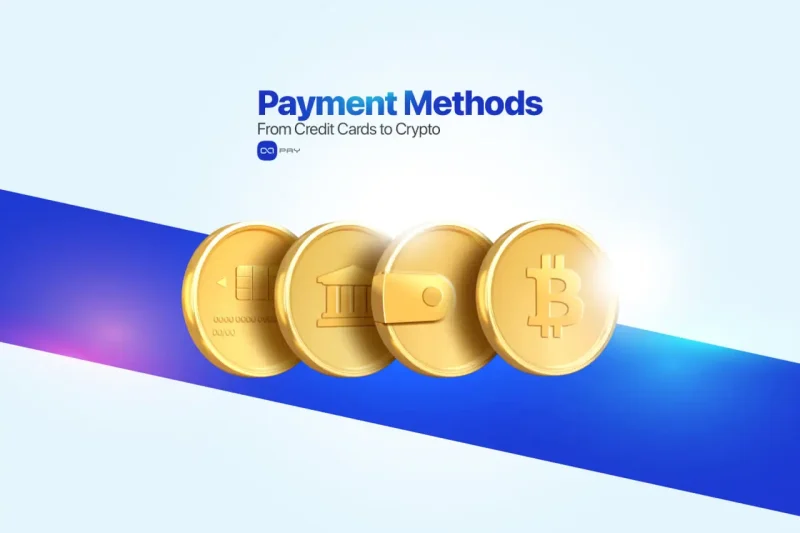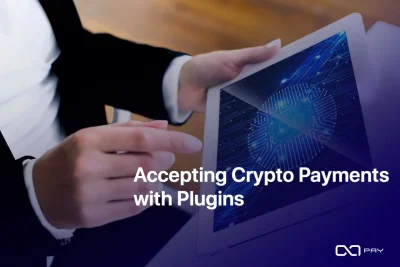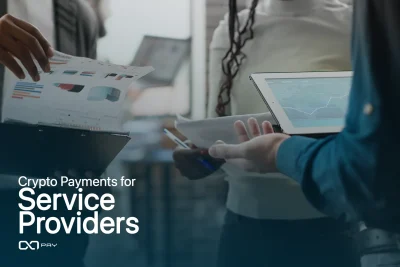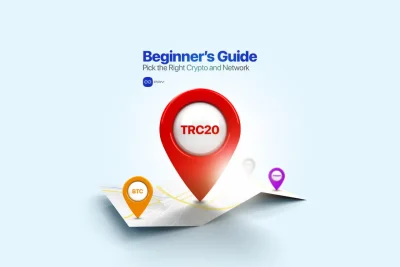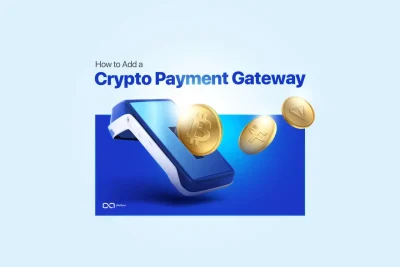Every business needs to decide which Payment Methods to offer and which payment gateway will process them. The choice directly impacts conversion rates, transaction costs, and customer trust. While credit cards and bank transfers have dominated for decades, digital wallets and cryptocurrencies are now strong alternatives.
In this article, we’ll review the most common payment methods, credit cards, bank transfers, digital wallets, and cryptocurrencies, highlighting their pros, cons, and how merchants can choose the best mix for their business.
Credit and Debit Cards
Credit and debit cards remain the most widely accepted form of online payment worldwide.
Pros
- High adoption: Nearly every online shopper owns a card.
- Fast and familiar checkout process.
- Support for recurring payments and subscriptions.
Cons
- Processing fees are usually around 2–4%, and can be higher in some industries.C
- hargeback risk: merchants may lose revenue in disputes.
- Limited reach in countries with low card adoption.
👉 Best for:
Businesses targeting customers in North America, Europe, and other regions with mature card networks.
📘 Professional Insight
Card payments rely on a multi-party network involving issuers, acquirers, and card networks like Visa or Mastercard. Merchants should note that high-risk industries may face stricter rules and higher merchant discount rates (MDR). Additionally, PCI DSS compliance adds technical and legal responsibilities that can impact small businesses.
Bank Transfers
Bank transfers are a direct way for customers to send money to a merchant’s account.
Pros
- Secure and traceable through banking systems.
- Useful for large-value B2B transactions.
- No need for customers to own a card.
Cons
- Settlement can range from instant (local rails) to several business days, especially cross-border.
- Complex for international payments with high fees (e.g., SWIFT).
- Customers may find the process inconvenient compared to one-click methods.
👉 Best for:
B2B merchants and industries handling high-value orders where security is more important than speed.
📘 Professional Insight
Cross-border bank transfers often pass through the SWIFT network, involving intermediary banks. Each adds its own fees, which can make costs unpredictable. Merchants handling frequent transfers should consider alternatives like SEPA in Europe or ACH in the U.S., which offer lower fees and faster clearing but are geographically limited.
Comparing Traditional and Crypto Payment Methods for Online Businesses
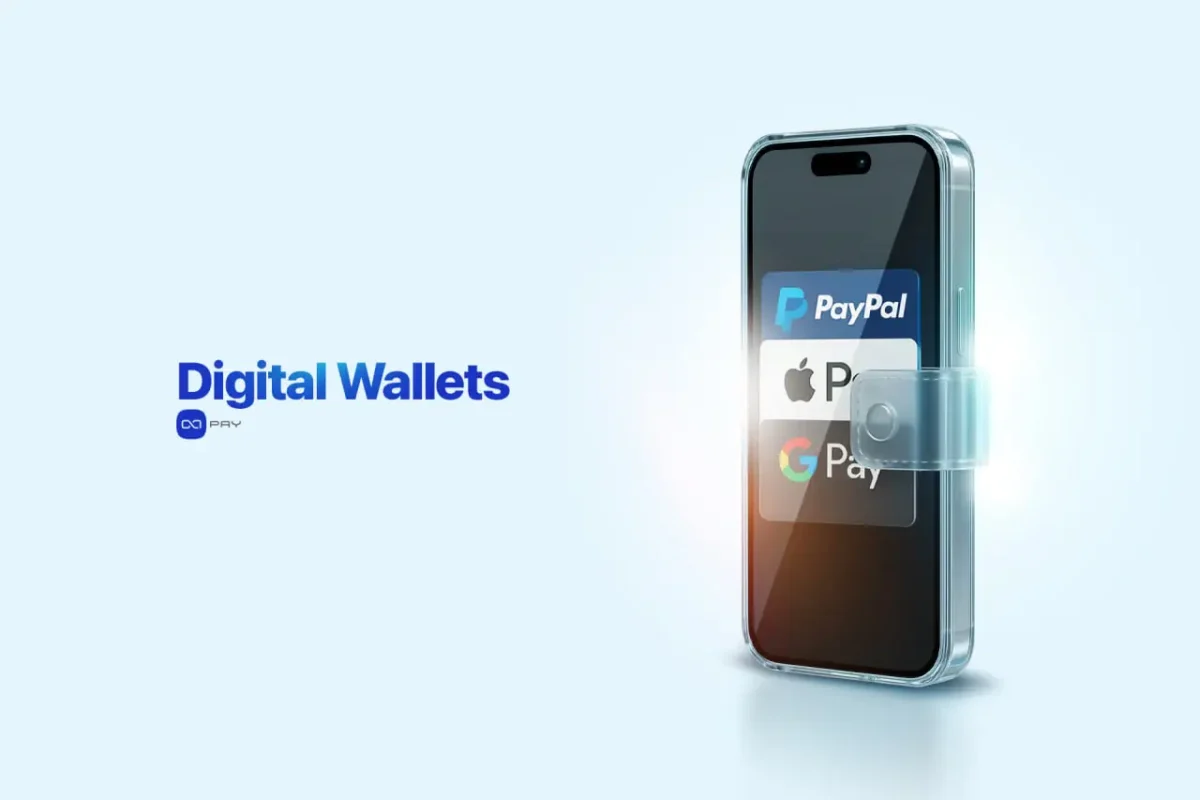
Digital Wallets
Digital wallets like PayPal, Apple Pay, or Google Pay act as intermediaries between customers and merchants.
Pros
- One-click checkout improves user experience.
- High adoption among mobile users.
- Extra fraud protection offered by providers.
Cons
- Additional fees for merchants.
- Limited availability in certain countries.
- Dependence on third-party platforms.
👉 Best for:
E-commerce and mobile-first businesses aiming to reduce cart abandonment.
📘 Professional Insight
Digital wallets often rely on tokenization, replacing sensitive card data with unique tokens. This reduces compliance costs for merchants and increases transaction security. However, reliance on a third-party provider means merchants are exposed to policy changes, account freezes, or platform restrictions that can directly impact cash flow.
Cryptocurrency Payments
Cryptocurrencies like Bitcoin, Ethereum, and stablecoins are increasingly used for payments. Payment gateways such as OxaPay make it easy for merchants to accept crypto alongside traditional methods.
Pros
- Global accessibility: no need for banks or card networks.
- Low fees compared to traditional processors.
- Near-instant settlement (network-dependent).
- No chargebacks: transactions are final on-chain (refunds only possible through merchant policy).
Cons
- Volatility for non-stablecoins like Bitcoin or Ethereum.
- Learning curve for both merchants and customers.
- Regulatory uncertainty in some regions.
👉 Best for:
Businesses with global customers, those in regions underserved by banks, companies adopting innovative payment methods, startups seeking lower fees, or enterprises aiming to provide faster and more secure checkout experiences across different markets.
Global crypto payments: A Solution for Businesses Without Banks
📘 Professional Insight
Settlement speed in crypto depends on the chosen network. For example, Bitcoin may take 10–30 minutes per transaction, while USDT on TRON (TRC20) or Polygon confirms within seconds and costs less than a cent. For merchants, using gateways like OxaPay helps mitigate volatility by offering stablecoin options and crypto-to-Stablecoin auto-conversion features and removes complexity around wallet management.
With these options in mind, choosing the right payment mix depends on your business needs and customer preferences.
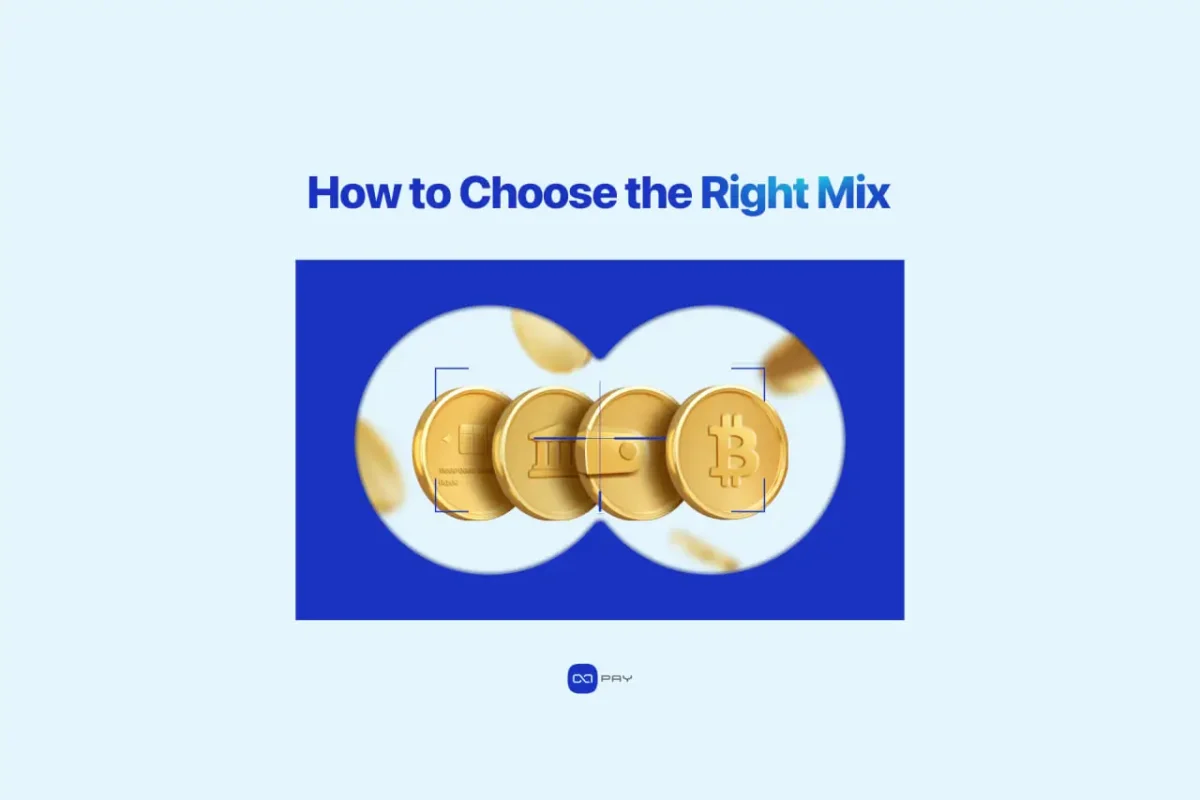
How to Choose the Right Mix
No single payment method fits all businesses. Merchants should evaluate:
- Customer Demographics: Do your customers prefer cards, wallets, or crypto?
- Transaction Size: Large-value B2B payments may require bank transfers.
- Geography: Cross-border businesses may benefit from crypto or digital wallets.
- Fees and Margins: High-margin products may absorb card fees, while low-margin businesses benefit from lower-cost crypto options.
- Technology Readiness: Businesses with developers can integrate APIs, while others may prefer plugins or payment links.
✅ Quick Checklist for Choosing Payment Methods
- Identify your customer demographics (region, device usage, payment habits).
- Match payment methods to transaction size (small vs. large-value).
- Compare fees across cards, wallets, and crypto.
- Check regional availability and banking infrastructure.
- Decide if you need recurring or subscription billing.
- Balance customer convenience with business costs.
- Add at least one alternative method (e.g., crypto) for global reach.
🔎 Comparison Table: Payment Methods at a Glance
| Payment Method | Speed | Fees | Global Reach | Security Level | Best For |
| Credit/Debit Cards | Instant (seconds) | 2–4% + chargebacks | High in developed markets | Medium (fraud risk, PCI DSS required) | B2C retail, subscriptions |
| Bank Transfers | Slow (2–5 days, faster local) | Variable, often high for cross-border | Limited by banking networks | High (regulated banking) | B2B, high-value payments |
| Digital Wallets | Fast (seconds) | 2–3% + platform fees | Medium, depends on provider | High (tokenization, fraud protection) | Mobile-first e-commerce |
| Cryptocurrency | Variable (seconds to minutes) | Very low (network fees) | Global, borderless | High (blockchain security, no chargebacks) | Cross-border, underserved markets |
Conclusion
The world of payments is evolving rapidly. While credit cards and bank transfers remain important, digital wallets and crypto are reshaping how businesses get paid. For merchants, the smartest move is to offer a mix of methods, meeting customers where they are while keeping costs and risks under control.
👉 Ready to add crypto to your payment stack? With OxaPay crypto gateway , you can start accepting Bitcoin, Ethereum, Tether, and more alongside traditional methods, fast, simple, and secure.
